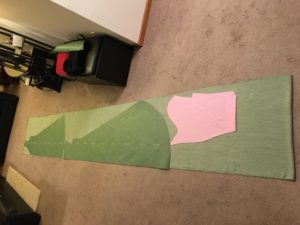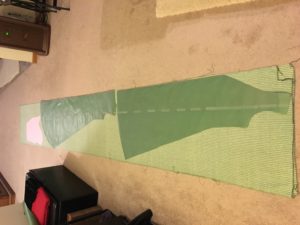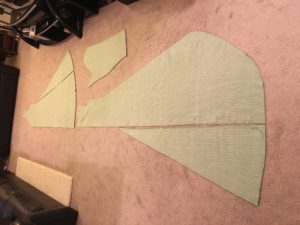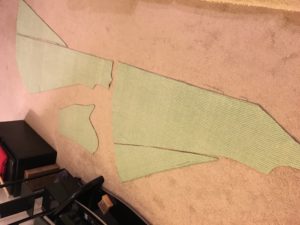I did it. I cut the fabric for this weaving project. 🙂
And, before you ask, no, I did not have any cutting anxiety for this. I am not entirely positive *why* I don’t have cutting anxiety. I think if I had bought the fabric, I might. But, this is kind of “free” because I bought these fibers sometime in the late 1990s. They’re in my fiber stash and have been taking up space ever since. While, yes, this is handwoven cloth and I spent hours weaving it, I didn’t have any issues cutting it. It’s all part of the experiments leading up to my end goal project.
Anyway, there was enough fabric in this weaving project for this dress to have a little bit of a train. Because of the narrow width of the fabric, I am planning to place gores in the front and the back.
I have a little bit of fabric left over that I can probably make a matching pouch.






 I started with my 4-piece cotehardie.
I started with my 4-piece cotehardie.

